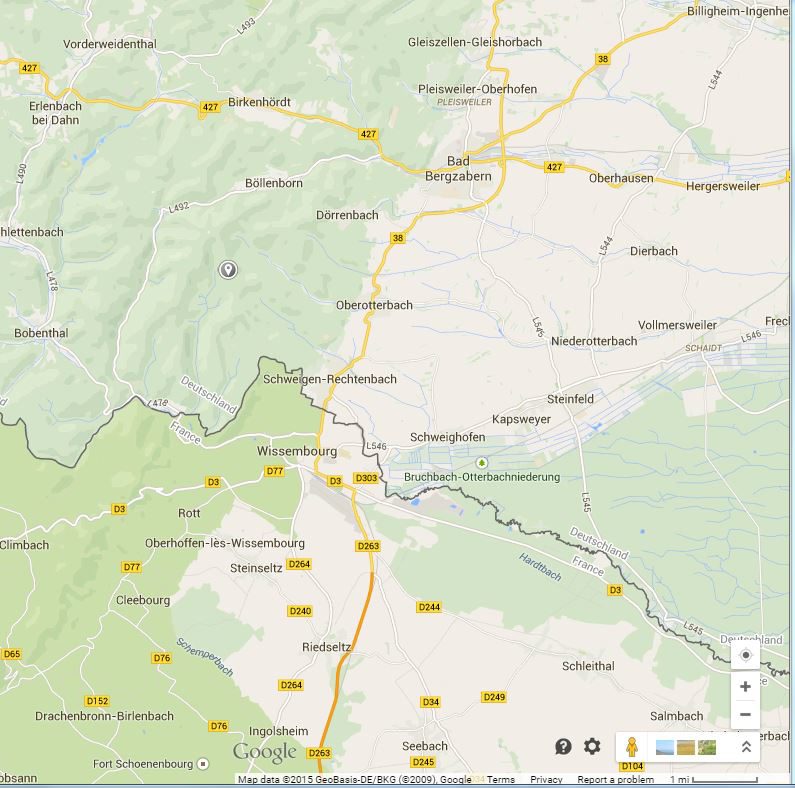Roger Bannister broke the 4 minute mile in 1954 and several days later Diane Leather broke the 5 minute mile for women. Huge accomplishments, but how are those times germane to genealogical research? Chances are, you can walk a mile in 15 to 20 minutes and a realistic estimate for a non-runner, is to jog a mile in 10 minutes. Don’t trust these estimates. Get in your car, watching the odometer, drive a mile down the street and around the corner. Go home and wearing comfortable shoes, walk that mile and time it. Don’t hurry, but don’t meander. Your time may be closer to 25 minutes, it may be an uphill course, there might be snow on the road, you may be pushing a stroller, the road may be full of potholes, or it may be raining, lots of situations could slow you down. The same is true in reverse, you could be going downhill, in gorgeous weather, on a flat surface, with great tunes moving you forward and maybe your time may be closer to 10 or 12 minutes.
Weinstrasse
Next, go out for a walk of 30 minutes, fifteen minutes out and fifteen minutes back. Drive the route and measure it with the car’s odometer. Now you have two estimates, how far you can walk in a half hour and how fast you can walk a mile.
Those two estimates should be in the back of your mind whenever you explore a new genealogical territory. Where did your ancestor live, how far from town, how far from friends, how far from employment, how far from a future spouse, how far from church? When I hear someone say “No problem it was only 30 miles away,” I wonder if that family were wealthy enough to have horses, waggons, or carriages to spare for visiting 30 miles away. At twenty minutes a mile, you can cover 3 miles in an hour so it would take you ten hours to walk 30 miles. Of course it can be done, but was it feasible?
A man on horseback, walking and trotting, could make 6 or 7 miles an hour, which would make 30 miles, a four or five hour trip. He could cover the first mile in seven or eight minutes, but not the whole trip.

On this map of southwestern Germany from Google, in the area between Bad Bergzabern Germany and Wissembourg, France, Oberotterbach is about halfway between the two cities, about two miles from the French border. Rechtenbach, now part of Schweigen-Rechtenbach, is about a mile south of Oberotterbach and a mile north of Wissembourg on the French border. While the outskirts of each village are nearly adjacent in 2015, in 1845 that was probably not the case. I had ancestors from each village who subsequently married in Louisville, Kentucky in 1847, Jacob Breitenstein from Oberotterbach and Margaret Gerber from Rechtenbach. What are the odds they knew each other? What are odds that as children, they both played at the castle ruins in the forest to the west upland from each village marked on the map? Those ruins of the Guttenberg Castle are upstream, west of both villages, maybe two miles. It had to be the draw for local children.
Amazingly each of those villages had its own Evangelical Church, my ancestors did not go to church together or meet at church, unless they shared a minister, but not a building. But they had to have met, don’t you think?









